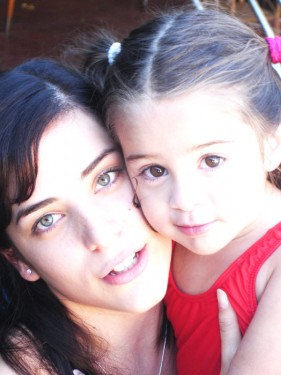 School is out, and camp’s begun – hooray! In the break between these two glorious institutions, many of our children took us on excursions to a dark and unlovely place I call Whine Country. “It’s not fair! Why can’t I have more iPod time??” “You promised we’d get ice cream!” “Ryan’s hitting me!”
School is out, and camp’s begun – hooray! In the break between these two glorious institutions, many of our children took us on excursions to a dark and unlovely place I call Whine Country. “It’s not fair! Why can’t I have more iPod time??” “You promised we’d get ice cream!” “Ryan’s hitting me!”
More distracting than a buzz-saw, more grating than nails on a chalkboard, whining is the scourge of parenting. These high-pitched, nasal, siren-like vocalizations can drive us all to… well, wine! Why do our little ones make these loathsome sounds, and what can we do about it?
While whining is supremely noxious, it is a normal, expected behavior at various stages of development. Children develop whining behavior at around age one-and-a-half, when they acquire the basic language to ask for what they want. Whining usually peaks at age four, but can persist well into the school years and beyond. The precipitants for whining are many and varied:
- Unmet physical needs or physical distress, such as tiredness, hunger, or not feeling well
- Wanting something that cannot be had – a toy, a food, an iPhone, more play time, etc.
- Frustration when struggling with a new skill
- Being over- or under-stimulated
Though the specific triggers vary, all whining is primarily driven by a desire to elicit attention. In a rare-but-illuminating study done on whining, social psychologist Rosemarie Sokol Chang and her colleagues (2011) found that whining is a sound uniquely capable of distracting adults and diverting their attention from other tasks, even when compared to sounds such as a table saw or an adult speaking in baby talk.
Chang posits that “Whines persist because they work – and they work because humans appear to have been designed to respond to human-produced sounds that are high-pitched, drawn out, and sing-songy.” In other words, we’re hard-wired to respond to whiney sounds, and our little ones are shaped by evolution to produce these sounds. Chang and her colleagues even charmingly dub whining an “attachment vocalization,” aimed at eliciting care from a caregiver. In other words: little Sammy and Emmy aren’t whining as part of a vicious plot to slowly drive you insane! Their behavior is a natural, evolutionarily-driven way of saying “Pay attention to me! I’m trying to tell you something!”
 So, how do we optimally respond to whining? There isn’t a clear consensus among experts. A popular suggestion, representing a strict behaviorist approach, is to “extinguish” whining behavior over time by ignoring it. Critics of this strategy claim that it doesn’t work, and furthermore, it models a behavior which clashes with the prosocial ideal of respectful listening, which we try to teach our children.
So, how do we optimally respond to whining? There isn’t a clear consensus among experts. A popular suggestion, representing a strict behaviorist approach, is to “extinguish” whining behavior over time by ignoring it. Critics of this strategy claim that it doesn’t work, and furthermore, it models a behavior which clashes with the prosocial ideal of respectful listening, which we try to teach our children.
On the other end of the spectrum, some parenting experts assert that a whiney child is showing that she is not receiving sufficient positive attention and connection with you, indicating that you need to step up your involvement and attunement with her. Well, yes, but we all know that even the most attentionally-nourished youngster will resort to whining when the spirit moves her, and that there are times that we simply can’t dole out that ideal level of attention.
What about punishing whining behavior? Most experts rule out punishment as an effective response. Children may get superficially quieter, but will harbor anger and resentment inside, or they may escalate until their perceived need is met. In any case, simply responding negatively to whining doesn’t appear to teach children anything, which is, after all, what we are supposed to be doing with our little ones.
My approach to managing whining children involves four steps:
Breathe! As soon as you hear that wretched whiney tone, take a deep breath, and quickly remind yourself that your child is not whining in order to infuriate you. He’s whining because he’s evolutionarily predisposed to do so, and because there’s something he feels he needs. He’s whining because, at this moment, he can’t come up with a more mature way to communicate what he’s feeling.
Think! Put on your mommy sleuth hat and try to discern what your child needs. Understanding what triggered your child’s whining is helpful for both of you. Differentiate between the need and the aversive means (whining) he is using to obtain it, and between what your child thinks is setting him off and what may be the real cause. Is your child in physical distress? Is she frustrated? Desiring something she can’t have? Or just craving your attention? She may be whining that she needs another American Girl doll, but you may determine that the real need is for a snack.
Communications 101! You don’t speak Whinish; you’re going to need to elevate this interchange to a higher plane.
With younger children (1-3), whose communication skills are still developing, it’s a good idea to start with a reflective statement, which essentially paraphrases back to the child what he is trying to tell or show you: “So your legs are getting really tired walking around the museum.” Follow this up with a statement that non-judgementally describes the way your child just spoke as “whining”, and model for your child a more appropriate, whine-free tone of voice by which they could express the same sentiment.
With older children (4+), the first priority is to teach a more age-appropriate means of communication. Respond to the whine by saying, “I know you’re upset, but please say the same thing in a regular voice. I can’t understand you when you talk in a whiny voice.” After the complaint has been restated in a more pleasant voice, acknowledge and reinforce the more appropriate tone of voice (“Thank you for saying that in a regular voice. I was able to understand that”) and offer a reflective statement. “You’re upset because Josh got more iPod time than you.”
Respond! If you’re dealing with unmet physical needs (i.e., hunger, tiredness, discomfort), do what you realistically can to alleviate it. Younger children (1-4) don’t yet have the reserves to cope with these lacks, and all the fanciest psychological footwork can’t help when a little one’s tummy is ferociously growling, so try to address these needs promptly. For older children (5+), while there’s no inherent benefit in deprivation, being able to tolerate uncomfortable states is an important life skill to develop, and offering your child validation and support while helping them hang on until the need can be alleviated is good training.
If the whining is due to wanting something – junk food, a toy, more play time – if the request is not unreasonable, and your child was able to re-state it in a non-whining, appropriate way (step #3), go ahead and gratify! Praise your child for how nicely he rephrased it while you satisfy the request. If, as is more often the case, the request is not one which can be fulfilled, then you’re going to have to stick with “no” – but there’s no reason you can’t be empathic while you stand firm.
Sometimes our guilt about not being able to fulfill a wish makes us adopt a contemptuous or irritated attitude (“Yuck! you already ate a bag of M&M’s – that’s gross!”), but that’s a mistake. Think of all the things we wish we could have (a massage, 15 minutes of quiet, one of those expensive self-running vacuums), and how hurt we’d feel to be unkindly judged for those desires. Your child is allowed to be upset when the wish can’t be fulfilled – little ones may even escalate into a full-blown tantrum – and will be learning valuable lessons about frustration tolerance along the way. Help her through the upset by soothing her, reminding her there will be other opportunities for the desire to be fulfilled, engaging her in a different activity, or simply by empathizing.
 Two more important points to keep in mind:
Two more important points to keep in mind:
Always try to remember the good ol’ adage of “Catch them doing good.” Try to reward good communication skills! When a potential whine is stated in a mature, relatively pleasant way, praise your child and even look for opportunities to gratify the request. After all, we don’t want to raise passive, non-aspirational children; we want our children to feel confident striving for their goals and communicating their wants. What we’re really after is teaching them how to do so in considerate and reasonable ways.
Second, don’t forget that we’re always modeling behaviors to our children – whether we like it or not! While it’s deeply human to want things we can’t necessarily have, chronic complaining – the adult analogue of whining – is not good modeling for our little ones. When the urge to complain rises, use it as an opportunity to show your children that we all are faced with frustrations, and that there are a whole range of options, from good-humored resignation to appropriate advocacy, at our hands.
So next time your little ones want to escort you through the dark tunnels of Whine Country, politely charter a different course! They’re programmed by nature to whine, and we are programmed to respond by getting anxious and agitated, but with some smart anticipating and thinking we can pull out of this bad cycle and establish a better communication pattern. This, in turn, will give your children a life-long gift as they learn more mature ways to express themselves and handle adversity.
Like what you read? Sign up for our free newsletter so you can be informed of the latest FREE webinars & teleclasses, parenting articles, & weekly raffles.
Dr. Shulie Rubin, Ph.D. is a licensed clinical psychologist in private practice for 13 years in Englewood, New Jersey, and the mother of three children. Dr. Rubin works with children, adolescents and adults on issues including anxiety, depression and relationships. Dr. Rubin has a special clinical focus working with and emotionally supporting mothers at all stages of parenthood. Her professional style has been described as a combination of “deep listening and practical problem solving.” Dr. Rubin can be reached at (201) 503-1446 or email@drshulierubin.com.
The views and opinions expressed on this blog are purely the blog contributor’s. Any product claim, statistic, quote or other representation about a product or service should be verified with the manufacturer or provider. Writers may have conflicts of interest, and their opinions are their own.



